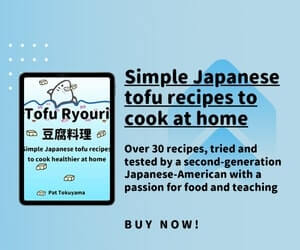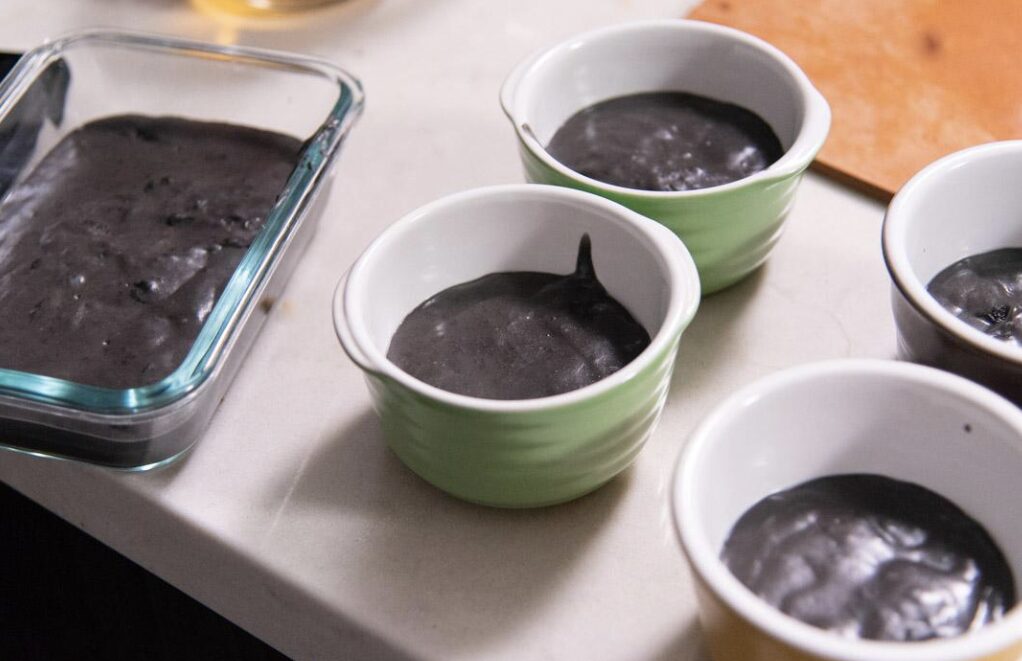Every year, the city and prefecture of Kyoto attract history buffs eager to behold the most spectacular Buddhist temples and Shinto shrines in Japan.
But many overlook its meaningful food traditions, from farming to cooking, that make it a well-rounded destination.
If you’re looking for unique and classic foods to try in Japan’s old capital, call the search party over.
Take a peek at some of my recos below!

Yudofu
If you’re soy into tofu like me, then you’d be foolish not to try Yudofu in Kyoto.
Custardy texture with a clean flavor, this hot pot dish is cooked by warming yudoufu (chunks of silken tofu) through a delicate broth of water and kombu (edible kelp), and served with a ponzu soy-based vinaigrette as the dipping sauce.
Just describing it makes my mouth water!
Fun fact: Shojin Ryori is a plant-based, vegetarian meal eaten by Buddhist monks in Japan, and Yudofu is the popular kind.
During the cold season, locals eat this dish to warm their bodies and stay healthy.
Specialty yudofu restaurants have surrounded Nanzenji Temple since 1635, and if you’re lucky, you might still spot some of them today.
If not, the Trip Advisor-awarded Yodofu Sagano is certainly not a bad choice.

Kyoyasai
With a location far away from the sea, a favorable climate, and resourceful farmers serving Buddhist monks, native vegetables have been produced in different parts of Kyoto.
There are about 23 Kyoto brand vegetables, which include mizuna (mustard greens), kamo-nasu (eggplant), yamanoimo (yam), takenoko (bamboo shoots), and tamba kuri (chestnuts) to name a few.
Unlike other veggies supermarkets are stuffed with, kyoyasai are delightfully sweet, have striking colors, and come in wonky shapes that make them unique.
They have become staple ingredients for high-end restaurants and in-home cooking.
Several Japanese restaurants and Japanese-style hotels in Kyoto serve kyoyasai for
Recently, French and Italian restaurants in the area have been joining the bandwagon, fusing European cooking with kyoyasai flavors.

Kyogashi
Those who came up with the saying, “Life is short. Make it sweet,” must have come from Kyoto.
Kyogashi is a type of wagashi (traditional Japanese sweets) that is beautiful, colorful, symbolic, and has been custom-made for different occasions since the Edo Era.
It was first made during the revival of the aristocratic culture and the blossoming of the
Resist the temptation to eat it in one go! It is best appreciated through the eyes, ears, and palate. Trust me!
Before a
As you savor each bite, appreciate how the shape and color reflect the season, scenery, or your host’s message.

Uji Matcha Tea
If you can only drink
Green tea from this city is among the oldest and most revered teas in Japan, earning it the title “Home of the
For sure, you’ve heard matcha but you haven’t tasted the best until you’ve tried it here.
What makes it special is how the
Just like eating kyogashi, drinking matcha is a sensual experience.
You can find it everywhere, from tiny soba shops to
It also comes in dessert forms, such as parfaits, cake, cookies, financiers, and jellies. If you fancy, Nishiki Ichiyo serves matcha pancakes and match-flavored popcorn.

Nishin Soba
Nope, we’re not talking about Nisshin Cup Noodles. Although they’re delicious; I’ll give you that!
There’s a downside to Kyoto being gated by beautiful mountains: historically the city did not have easy access to fresh seafood and had to preserve fish to make it last longer.
One popular dried fish is nishin or Pacific herring, which is cooked in soy sauce and sugar.
In 1882, the genius sous-chef of Matsuba Soba started serving the herring with soba (buckwheat noodles) and hot tsuyu broth—and the rest is history.
Apart from the Matsuba Soba, the historic Honke Owariya, a stone throw’s away from the Nijo Castle, is also a fantastic place to enjoy this culinary delight.
Its zen-like atmosphere, homely service, and wide selection of sweet confections create a wholly different dining experience.
Conclusion
Even if you force me, it would be a sin for me to pick between Kyoto and Osaka as my only food destination.
All their delicacies sound delicious!
How about you; which one ranks higher on your list?
Rest your case in the comments section down below!
For more trip-planning hacks and food guides, check out my Travel posts.











Konnichiwa! (Hello!) I'm Pat Tokuyama, a Japanese tofu cookbook author, who travels for music, food, and adventure. If you like Japanese tea, checkout some of the newestorganic japanese tea, matcha bowls and noren and more!
** Curious about the Plant Based Japanese Cooking Club? ** Learn more here!